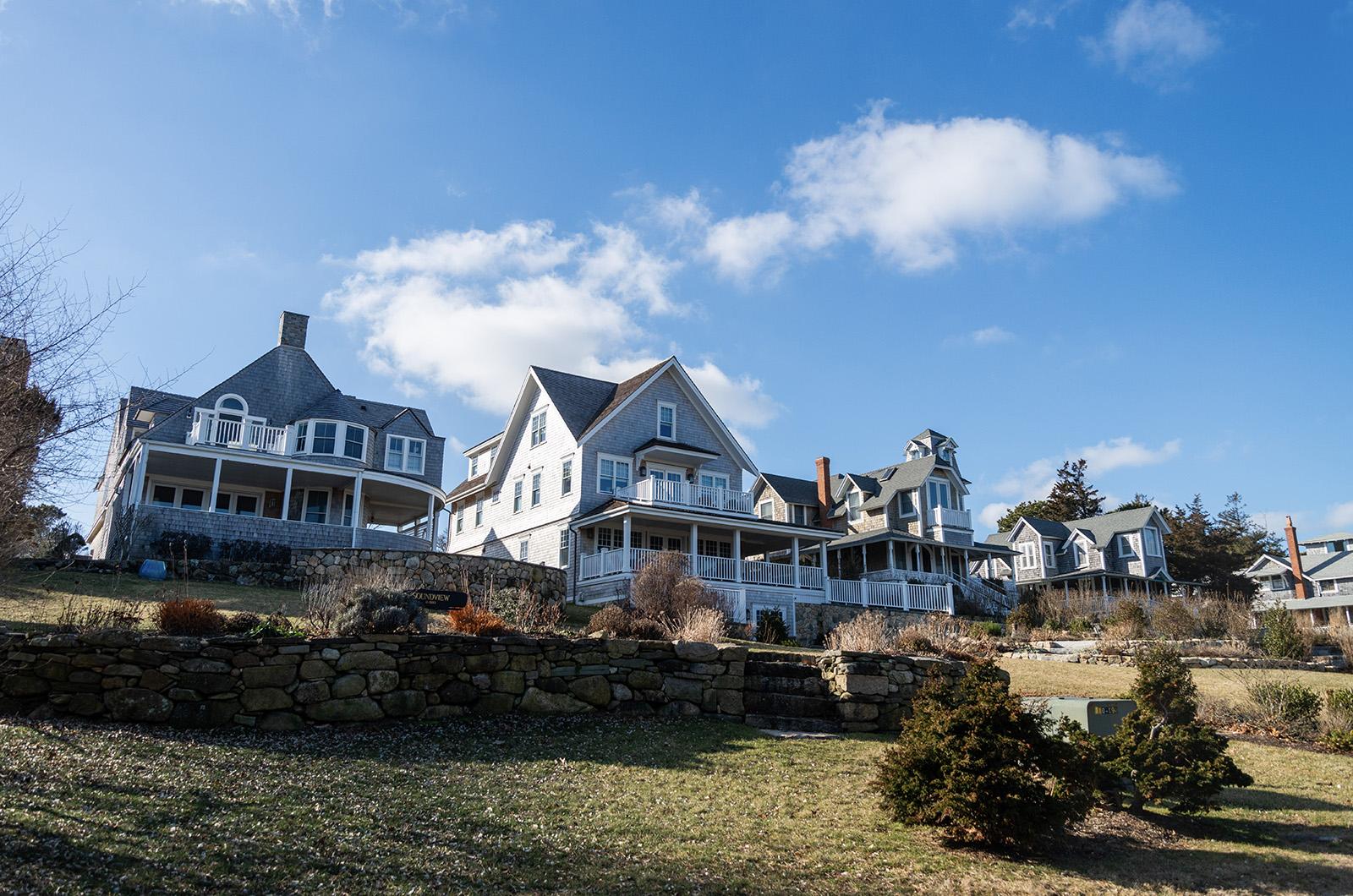The exact timeline has been disputed, but in a matter of days in April 2019, a Revolutionary War-era building on West Chop was reduced to rubble. The Mill House, as it was known, was supposed to be reviewed by the Martha’s Vineyard Commission before demolition under a decades-old policy. But before that review could take place, the house became little more than a hole in the ground.
The razing of the Mill House was something of a wake-up call for historic preservationists, long frustrated by minor infractions by homeowners and contractors and lax enforcement.
Perhaps most significantly, it prompted the Martha’s Vineyard Commission to strengthen its oversight of century-old buildings that lie outside designated town historic districts — oversight that has been met with increasing resistance from some homeowners. An unusually-high volume of demolition requests in 2021 resulted in an outbreak of litigation against the MVC, prompting some towns to balk at the commission’s mounting legal fees.
“Of the four denials we issued that year, three were met with a lawsuit,” said Fred Hancock, now chairman of the MVC. “We even saw litigation from a project we approved.”
Earlier this month, the commission settled one of those lawsuits with an Oak Bluffs couple seeking the demolition of their East Chop home. Another lawsuit has been stayed while the homeowners and the MVC seek out-of-court resolution.
In addition to taking a harder look at demolition requests, the commission’s new historic preservation policy designates all buildings over 100 years old or those listed in MACRIS, the state’s database of culturally-significant buildings, as developments of regional impact (DRI). The new policy also triggers mandatory review of any renovations or alterations exceeding 25 per cent of the existing historic portion of the façade, not just demolitions.
The change could bring a new wave of buildings coming under MVC review. According to commission data, roughly 60 per cent of the Island’s current tally of 2,390 historic buildings are not within historic districts, and more than 400 additional buildings could hit the 100-year mark in the next decade.
The DRI Checklist defines “demolition” as “any act of pulling down, destroying, removing, or razing any building or a portion thereof, with or without the intent to replace the structure so affected.”
The new policy encourages five alternatives to demolition: preservation, rehabilitation, restoration, relocation and reconstruction, or any combination thereof, except in cases of “extreme disrepair, or where safety is an obvious concern.”
Mr. Hancock, who helped write the policy, said the goal is to catch historically-significant buildings Islandwide and establish a more constructive approach to historic preservation — one in which demolition is “an extreme last resort.”
“We’re trying to take the emphasis away from demolition and steer people towards alternatives,” Mr. Hancock said.
But some homeowners have pushed back.
Brian and Susannah Bristol, longtime owners of a home on West Chop in Vineyard Haven, sued the MVC after it denied their request to rebuild it. The Bristols argued that since the home had been remodeled many times in its 130-year history, the proposed rebuild would be more authentic to the original home than the existing structure. They also said that while renovation would be technically possible, it would cost 50 percent more than rebuilding the house.
“In order to rehabilitate the house and address its foundation problems, the house would need to be lifted off its foundation and the interior gutted, destroying the historical integrity of the interior,” the Bristols’s complaint said. The case is now on hold.
On Jan. 4, the commission approved a settlement with applicants Eunu Chun and Lisa Kim, who had sued the commission in 2022 after the board rejected plans to expand and winterize their East Chop home.
Last month, the commission voted to approve new plans presented by the couple’s architect and attorney, with only one commissioner, Ben Robinson, voting against the new proposal.
Mr. Robinson, an architect, says he believes historic preservation goes beyond issues of aesthetics and local character, that preventing demolitions is a sustainability issue.
The act of demolishing an old house to rebuild a new one creates far more waste than a renovation, he said, and rebuilds are often made with synthetic materials that create more harm to the environment than natural ones.
Still, he acknowledged the rising costs of litigation. In 2022, the MVC doubled its legal budget to $195,000, although $100,000 of those fees were recovered by insurance.
“The Island is a place that’s being overrun with wealth, and there are only so many battles,” he said.
The MVC does not explicitly include environmental concerns in its DRI process, but Mr. Robinson hopes to change that. He is currently writing a materials policy he hopes to extend to all projects that come before the commission’s review.
The real culprit, he said, is that when an applicant seeks to demolish an existing home, they invariably want a bigger one in its place, increasing the overall consumption and waste that goes into the property. In his tenure on the commission, Mr. Robinson said he has never seen an application for a smaller home.
“The biggest problem we need to address [in terms of climate] is the size of everything,” he said. “Everything is bigger and everything needs to be smaller. But nobody wants to accept that.”
Although it has ruffled some feathers, in practice, the new policy does not make the MVC the sole arbiter of historical buildings, Mr. Hancock said. The policy also establishes “concurrent review,” which sends an application back to town boards for greater local input. And the MVC has ramped up its educational efforts with real estate professionals, builders and architects, so their clients aren’t caught unawares, Mr. Hancock added.
For the town of Tisbury, which has struggled to staff its volunteer-run historic district commission, that aspect of the MVC’s new policy adds a helpful layer of insurance, said Judy Federowicz, chair of the historic district commission. Unlike the Martha’s Vineyard Commission, local historic districts can work directly with their town’s building department to ensure builders and architects stay in compliance.
Nonetheless, the information does not always trickle downstream, she said. Ms. Federowicz has worked both as a real estate agent on-Island and served on the William street historic district commission since 1983.
“I know of one case where I was in on a showing and I couldn’t believe a realtor said what they said,” she said. “I took them aside and I said ‘I think maybe we should revisit that. I don’t believe that’s quite true.’ You don’t want to spank someone in front of their client, after all.
“Now there’s a questionnaire and a checkbox: does this need to be reviewed by the William street historic district commission?” she said. “The William street historic district, we have teeth. We can stop a project.”
This is the third article in a series on the Vineyard's historic homes. To read the rest of a series visit the State of Historic Preservation page.










Comments (12)
Comments
Comment policy »